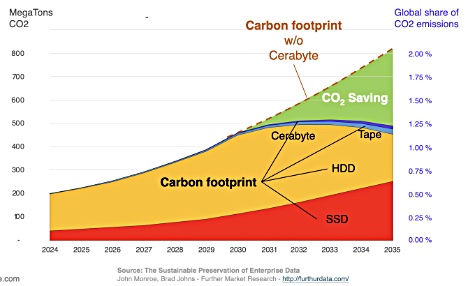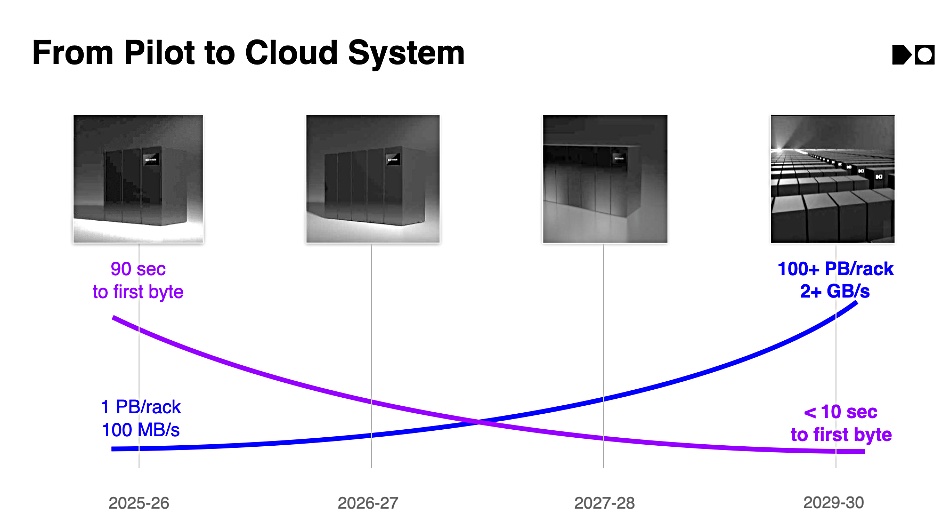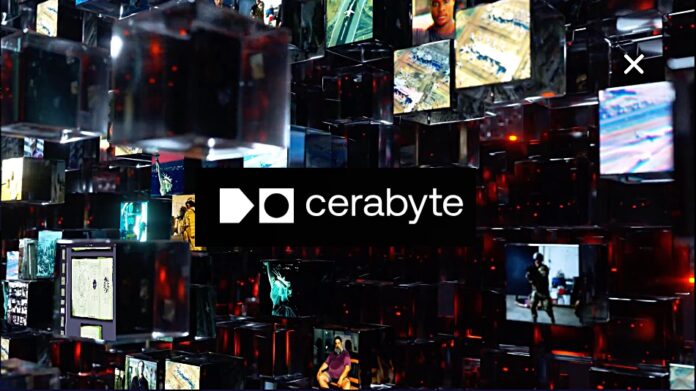Cerabyte says it could deliver a 100-plus PB archival storage rack with 2 GBps bandwidth and sub-10-second time to first byte by 2030.
CMO and co-founder Martin Kunze presented the Cerabyte story to an A3 Tech Live audience in Munich recently, reviewing its technology based on femtosecond laser etching of a ceramic recording layer on a glass tablet substrate. The glass tablets are stored in tape-like cartridges that are deployed in a tape library-type system with robotic carriers moving the cartridges between their storage shelves to and from data reading and writing stations.
The company is developing its pilot production system and has partnered with and received investment from Pure Storage, Western Digital, In-Q-Tel, and the European Innovation Council (EIC) Accelerator fund. It competes with Microsoft’s in-house Project Silica glass tablet-based archive technology, Holomem holographic technology, and other long-term archival technologies such as Piql film.
Kunze said Cerabyte’s tech is longer-lived, faster, and cheaper than tape, lasting more than 100 years compared to tape’s 7 to 15 years, shipping data at 1-2 GBps versus tape’s 1 GBps, and costing $1 per TB against tape’s $2 per TB. The carbon footprint of global data storage could, he claimed, be reduced from 2 percent of global CO2 emissions to 1.25 percent by substituting Cerabyte for tape and other archives.

He was citing a Furthur Market Research white paper, “The Sustainable Preservation of Enterprise Data,” which was sponsored by Cerabyte, Fujifilm, and IBM. Kunze showed a roadmap chart:

This started with a 1 PB per rack pilot system in the 2025/2026 period having a 90 second time to first byte and a 100 MBps data transfer rate. Three technology refreshes later, in the 2029/2030 period, the technology is expected to deliver a system with more than 100 PB per rack, a time to first byte of under 10 seconds, and a transfer rate exceeding 2 GBps. Over this five-year period, the total cost of ownership per PB per month should drop from around $7,000-$8,000 to $6-$8.

Cerabyte thinks the femtosecond laser writing technology could conceivably progress to a particle beam matrix tech, reducing its written bit area spot size from the 300 nm area to 3 nm by 2045 using a helium ion beam, producing a rack with a 100,000 PB capacity. This is so far out in technology terms that we can marvel at it but discount it as realizable technology for the time being.
It sees its technology as having faster archival access and lower cost per TB than rivals like Microsoft’s Project Silica, Holomem, DNA storage, Piql, and others.
Cerabyte has raised around $10 million in seed funding and has received more than $4 million in grants. It is now working on raising an A-round of VC funding.








